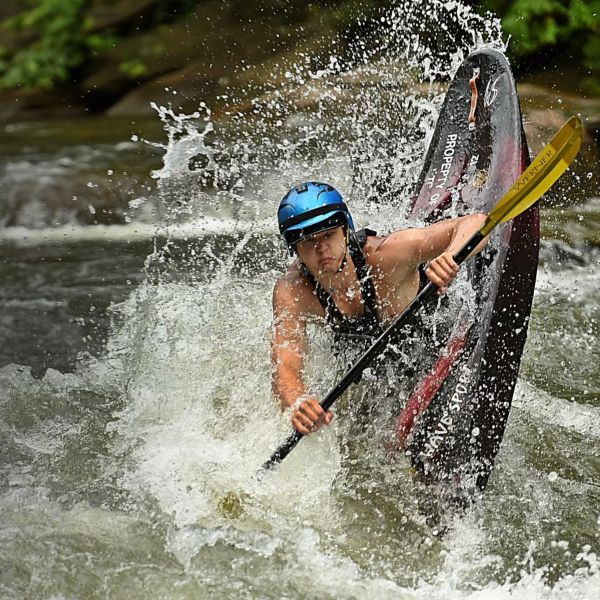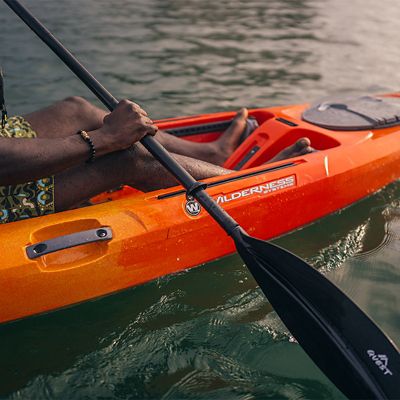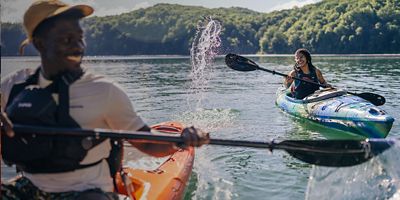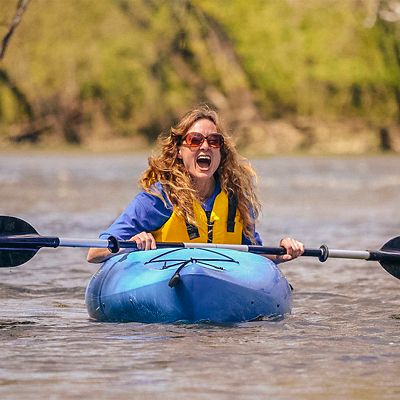
Car racks for your paddling gear are great, making sure you can safely transport your craft of choice from home to your waterborne adventure. However, you still have to get your canoe, kayak, or SUP from vehicle to water, without damaging it or your precious vertebrae. For that, stick to the following pointers for effectively carrying your boat or board from land to sea.
Tandem vs. Solo Carry
In general, the more the merrier. If you have the time and the partner(s), using two people to carry a paddlecraft is easier than hefting it solo—especially for bigger, heavier boats like canoes, sea kayaks, sit-on-tops and fishing kayaks. For that, station one person at each end and grab the craft’s carrying handles or grab loops on the bow and stern. Lift with your legs (not your back) and keep your carrying arm straight to lessen fatigue. Note: The person in the lead should call out any upcoming obstacles (like steps, rocks and logs), which might be obscured to the stern carrier by the boat’s hull. Hint: Carrying the boat at a slight angle increases line-of-sight visibility for the rear carrier. If your paddlecraft doesn’t have carrying handles, grab the end of the hull by cradling it in your arms.
Paddling Carts
For bigger and heavier boats like canoes, fishing kayaks and sea kayaks, another option is using a paddling cart, which is designed to transport your paddlecraft to and from launches. A variety of carts exist for different capacities and terrain, most employing two wheels that attach beneath the boat’s stern, with a strap extending over the top of the hull for load security. Some carts break down so you can bring them with you on the boat while others are designed to be left in the car until you return.
Carrying Your Canoe Solo
Transporting a bulky canoe from car to water isn’t always easy. (Hints: Always drive as close to the water as possible; consider using paddling carts, which you can take with you for suitable portages; and feel free to drag it if you’re on soft grass or sand.) If you’re solo and have to carry it, here’s the technique: Stand at the canoe’s center, grasp the close gunwale with both hands and lean the canoe so its hull is pressed against your legs. Next, grab the center of the yoke to hoist the canoe up onto your thighs. From here, grab the far gunwale with your left hand, just forward of the yoke, rock the craft back and forth on your thighs and then, in one motion, flip the canoe over your head while rotating it 90 degrees, so the yoke lands across your shoulders. Stand up and keep your hands positioned on each gunwale as you walk, balancing the weight of the canoe on your collar and shoulders. To lower, repeat, using the opposite procedure to lower the canoe back onto the ground.
















